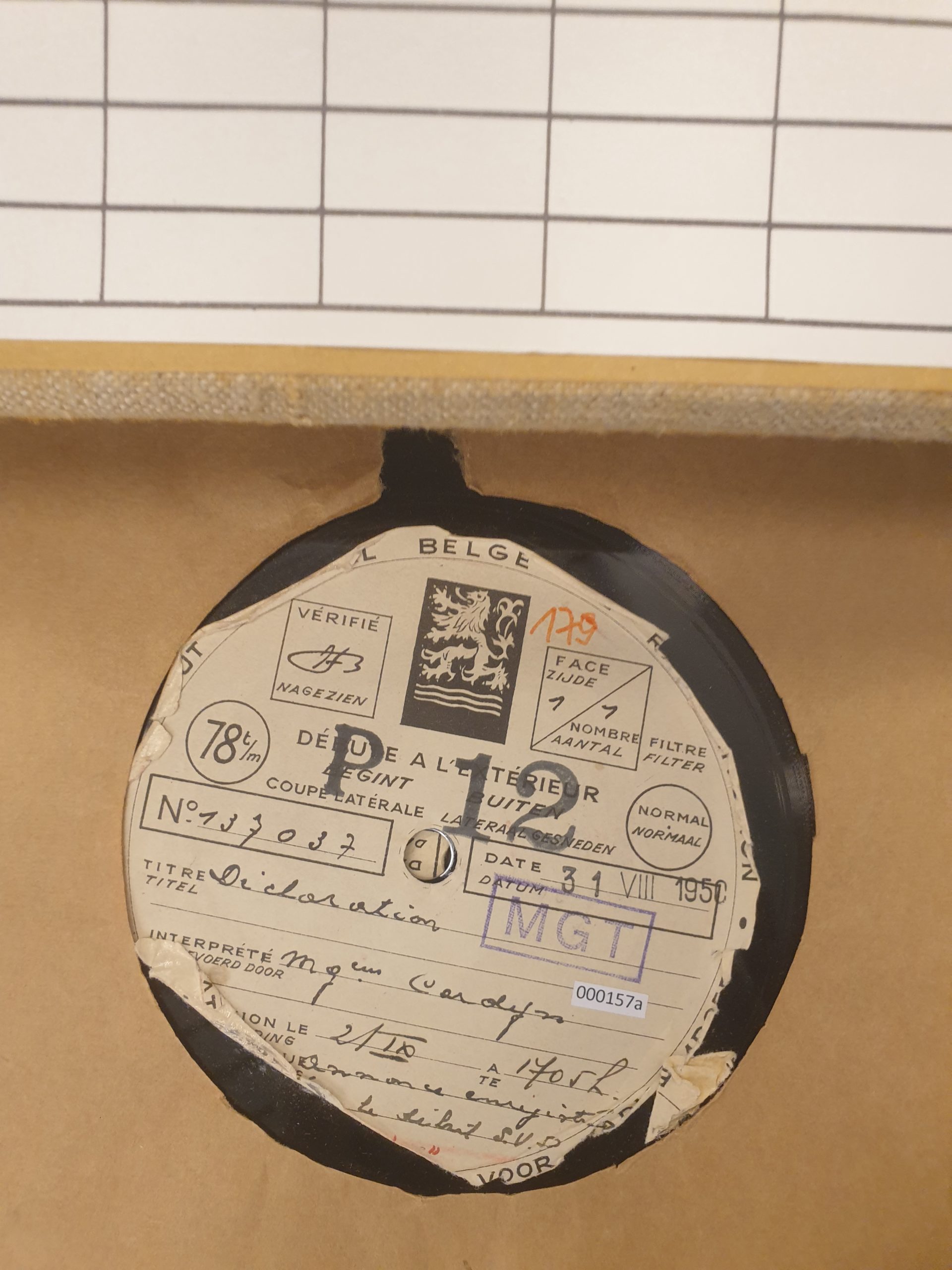In December 2021, Meta-Sillon was contacted by SONUMA to provide a preliminary survey report for the digitization of the collection of lacquer discs of RTBF (Radio-Télévision Belge Flamande).
During our visit on site at RTBF in Bruxelles, we were introduced to the collection of instantaneous discs of the Walloon Belgium national radio which is one half of the historical Belgian collection, the other half being preserved by VRT, the Flemish counterpart of RTBF. Mrs Gozzini of SONUMA presented us with the context of the forthcoming digitization project.

The 11,000 discs of the collection are instantaneous discs, also called “lacquer discs” or sometimes inaccurately “acetate discs”. In these discs, the groove is directly cut into a lacquer which has been finely spread on both sides of a flat and round core made of solid and smooth material. It is possible to determine the core material of a disc by using such clues as the visual aspect of the edge of the disc, the appearance of the lacquer, the weight and brand of the disc, and the sound resonance it delivers when gently tapped. The cores of the RTBF discs are mostly made of aluminum, but some are also made of zinc, cardboard or glass.
These unique and precious disc recordings were made between 1934 and 1959, most of them in the 1940’s and 1950’s. The discs from the period of WWII constitute a large part of the collection and they are of substandard quality, with cores made of various metal alloys, or sometimes organic supple material, and with lacquers below the smoothing quality standard found in the 1930’s or 1950’s. This is due to the shortage of quality material during the war.
The recording speeds found are mostly 78 rpm and 33 1/3 rpm, with also a very small quantity of discs recorded at the less usual speed of 50 rpm.
A majority of discs are from American brands Audiodiscs and Presto, as well as European manufacturers Thorens, Pyral and MSS. Other brands are also found in lesser quantities.
As a whole, the RTBF discs are in rather good condition considering they are lacquer discs. Numerous discs display a white layer of palmitic acids, which is quite usual and can be removed with an intensive cleaning. A small portion of carriers display lacquer cracks and delamination, or warping. Many center labels are peeled off, damaged and partially missing.






These broadcast recordings mostly contain spoken words. Numerous pencil markings are found, indicating the rejected parts (crossed) and the parts to keep for broadcasting. Besides, long programs are split on several sides with overlaps between consecutive sides, allowing for synchronisation and on the fly editing during broadcast, at the time.
In the report we delivered to SONUMA, we provided detailed insight about the nature of the discs of the collection, as well as a set of elements aimed at being used during the writing of the tender that would lead to the choice of a digitization company. This report gave SONUMA recommendations for the options and focus points related to the various aspects of the required service : cleaning, digitization, photography, editing, restoration, quality control, metadata management, transport and storage conditions by the service provider.